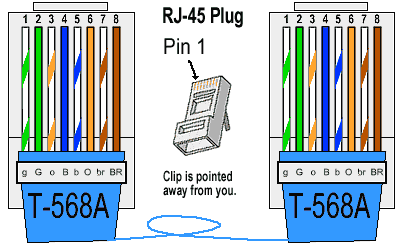Hi,
I'm trying to extend my ethernet wall jack from one room to another by cutting an existing ethernet cable and replace the male rj45 connector with a female connector on the cut end. I'm not sure how to wire the female connector. I tried to wire it like a regular female jack, but it doesnt work.
I guess I have to wire it diffenterly when extending a standard ethernet cable. Can any on help with the wiring?
/J
I'm trying to extend my ethernet wall jack from one room to another by cutting an existing ethernet cable and replace the male rj45 connector with a female connector on the cut end. I'm not sure how to wire the female connector. I tried to wire it like a regular female jack, but it doesnt work.
I guess I have to wire it diffenterly when extending a standard ethernet cable. Can any on help with the wiring?
/J


